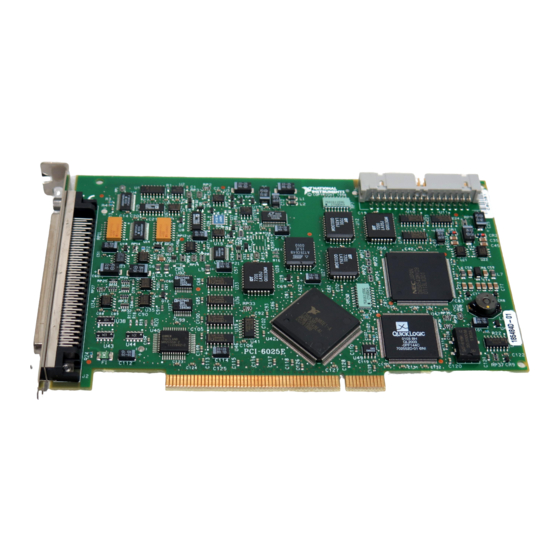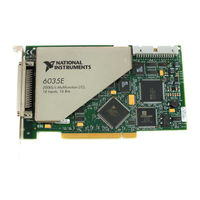
National Instruments 6023E Manuals
Manuals and User Guides for National Instruments 6023E. We have 2 National Instruments 6023E manuals available for free PDF download: User Manual
National Instruments 6023E User Manual (265 pages)
Brand: National Instruments
|
Category: I/O Systems
|
Size: 3 MB
Table of Contents
Advertisement
National Instruments 6023E User Manual (136 pages)
Multifunction I/O Devices for PCI, PXI, CompactPCI, and PCMCIA Bus Computers
Brand: National Instruments
|
Category: Network Hardware
|
Size: 1 MB

